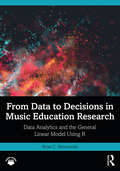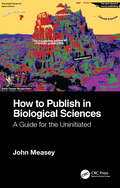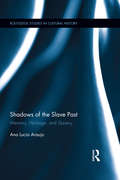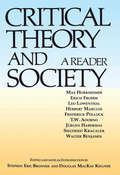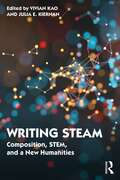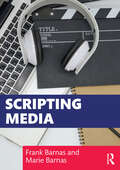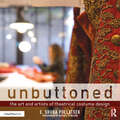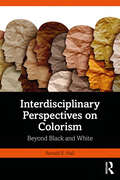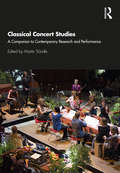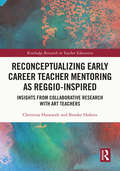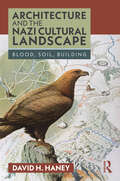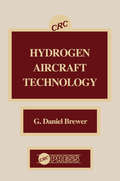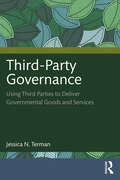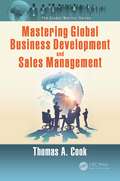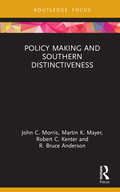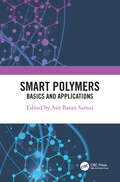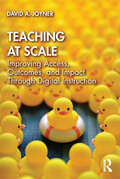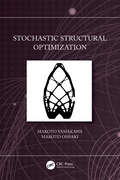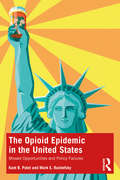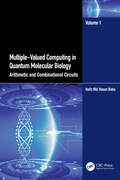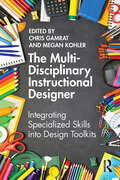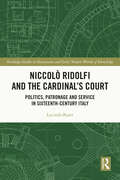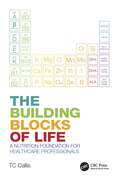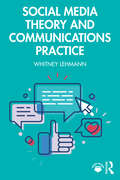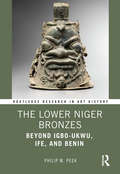- Table View
- List View
From Data to Decisions in Music Education Research: Data Analytics and the General Linear Model Using R
by Brian C. WesolowskiFrom Data to Decisions in Music Education Research provides a structured and hands-on approach to working with empirical data in the context of music education research. Using step-by-step tutorials with in-depth examples of music education data, this book draws upon concepts in data science and statistics to provide a comprehensive framework for working with a variety of data and solving data-driven problems.All of the skills presented here use the R programming language, a free, open-source statistical computing and graphics environment. Using R enables readers to refine their computational thinking abilities and data literacy skills while facilitating reproducibility, replication, and transparency of data analysis in the field. The book offers: A clear and comprehensive framework for thinking about data analysis processes in a music education context. An overview of common data structures and data types used in statistical programming and data analytics. Techniques for cleaning, preprocessing, manipulating, aggregating, and mining data in ways that facilitate organization and interpretation. Methods for summarizing and visualizing data to help identify structures, patterns, and trends within data sets. Detailed applications of descriptive, diagnostic, and predictive analytics processes. Step-by-step code for all concepts and analyses. Direct access to all data sets and R script files through the accompanying eResource. From Data to Decisions in Music Education Research offers a reference "cookbook" of code and programming recipes written with the graduate music education student in mind and breaks down data analysis processes and skills in an approachable fashion. It can be used across a wide range of graduate music education courses that rely on the application of empirical data analyses and will be useful to all music education scholars and professionals seeking to enhance their use of quantitative data.
How to Publish in Biological Sciences: A Guide for the Uninitiated
by John MeaseyThis book is a guide specifically for Early Career Researchers on how to publish in the Biological Sciences, whether that be your first manuscript or if you’re already experienced – there’s something for everyone.Following on from How to Write a PhD in Biological Sciences: A Guide for the Uninitiated, it will guide you through taking your manuscript to publication in peer-reviewed journals and disseminating your research more broadly. It talks you through the peer-review process, including how to respond to reviewers’ comments, the meaning and importance of Impact Factors and how to get citations. It also explores the challenges in the academic community around Open Access and other debates, including transparency, overlay journals, paywalls, publication bias, predatory journals and the dangers of bullying.Whether you are a student just completing your studies, or a supervisor struggling with rejections, this book will provide the insider information you need to get ahead.
Shadows of the Slave Past: Memory, Heritage, and Slavery (Routledge Studies in Cultural History)
by Ana Lucia AraujoThis book is a transnational and comparative study examining the processes that led to the memorialization of slavery and the Atlantic slave trade in the second half of the twentieth century. Araujo explores numerous kinds of initiatives such as monuments, memorials, and museums as well as heritage sites. By connecting different projects developed in various countries and urban centers in Europe, Africa, and the Americas during the last two decades, the author retraces the various stages of the Atlantic slave trade and slavery including the enslavement in Africa, the process of confinement in slave depots, the Middle Passage, the arrival in the Americas, the daily life of forced labor, until the fight for emancipation and the abolition of slavery. Relying on a multitude of examples from the United States, Brazil, and the Caribbean, the book discusses how different groups and social actors have competed to occupy the public arena by associating the slave past with other human atrocities, especially the Holocaust. Araujo explores how the populations of African descent, white elites, and national governments, very often carrying particular political agendas, appropriated the slave past by fighting to make it visible or conceal it in the public space of former slave societies.
Critical Theory and Society: A Reader
by Stephen Eric BronnerA collection of seminal essays, many appearing in English for the first time, which provides an excellent overview of the critical theory developed by the Frankfurt School.
Writing STEAM: Composition, STEM, and a New Humanities
by Vivian KaoThis edited collection positions writing at the center of interdisciplinary higher education, and explores how writing instruction, writing scholarship, and writing program administration bring STEM and the humanities together in meaningful, creative, and beneficial ways.Writing professionals are at the forefront of a cross-pollination between STEM (Science, Technology, Engineering, and Mathematics) and the arts and humanities. In their work as educators, scholars, and administrators, they collaborate with colleagues in engineering, scientific, technical, and health disciplines, offer new degree programs that allow students to bring the humanities to bear on design experiments, and build an academic culture that promotes a vision of the humanities in the twenty-first century, as well as a vision of technology that is decidedly human. This collection surveys and promotes that work through chapters focused on writing instruction, writing scholarship, and writing program administration, covering topics that include data-driven writing courses, public science communication, non-traditional college students, creative writing, gamification, skills transfer, and Writing Across the Curriculum programs. Writing STEAM will be essential reading for scholars, instructors, and administrators in writing studies, rhetoric and composition, STEM, and a variety of interdisciplinary programs; it will aid in teacher training for both humanities and STEM courses focused on writing and communication.
Scripting Media
by Frank Barnas Marie BarnasBringing together professional standards, practices, and jargon from across the industry, Scripting Media provides a complete overview of writing for divergent forms of media.While some forms of media writing have been honed and standardized over generations, others demand new ways of thinking and collaborating. Covering traditional forms of scriptwriting, such as news, advertising, and film scripting, as well as newer and more emerging areas of social media and virtual reality, this book is designed to prepare readers for the varying formats, styles, and techniques specific to each medium. Each chapter contains a list of key terms, an historical overview of the area, and technical specifications for students to be aware of. Exercises, essay prompts, and online links help reinforce students’ knowledge and provide avenues for private study.Written in an accessible and engaging style by two renowned media practitioners, authors, and teachers, Scripting Media is essential reading for students approaching media writing for the first time.
Unbuttoned: The Art and Artists of Theatrical Costume Design
by Shura PollatsekUnbuttoned: The Art and Artists of Theatrical Costume Design documents the creative journey of costume creation from concept to performance. Each chapter provides an overview of the process, including designing and shopping; draping, cutting, dyeing, and painting; and beading, sewing, and creating embellishments and accessories. This book features interviews with practitioners from Broadway and regional theatres to opera and ballet companies, offering valuable insights into the costume design profession. Exceptional behind-the-scenes photography illustrates top costume designers and craftspeople at work, along with gorgeous costumes in progress.
Interdisciplinary Perspectives on Colorism: Beyond Black and White
by Ronald E. HallThis timely and unique book explores the concept of colorism, which is discrimination based on the color of a person’s skin, in a world where arguably light skin is privileged over dark, and one’s wealth, health, and opportunities are impacted by skin color, sometimes irrespective of one’s racial background.In the context of our multi-cultural and increasingly global society, and the historical backdrop of slavery, the text takes a unique approach by moving from personal anecdotes to adopting a scientific perspective grounded in empirical evidence. Hall explores how skin color is a more effective framework for examining prejudice and discrimination, as racial identities become increasingly mixed due to inter-racial unions and immigration. He argues that racism as discrimination by race is contrived, polarizing, and non-quantifiable, and that it is often skin color that is used to "identify" race, often inaccurately. With skin color being a visual and physical characteristic, with race-based prejudices attached to it, the author shows how skin color can be a loaded identifier of value and identity. In a world where the objective measure of skin color crosses racial boundaries and where race will become increasingly indiscernible over time, the ultimate aim of this book is to prepare for the social future of mankind that has already begun to take shape. Split into three parts, examining historical, contemporary, and potential future perspectives on colorism, this is fascinating reading for students and academics in psychology, social work, education, criminal justice, and other social sciences. The text will also be useful for providing validation for including colorism into the public domain.
Classical Concert Studies: A Companion to Contemporary Research and Performance
by Martin TröndleClassical Concert Studies: A Companion to Contemporary Research and Performance is a landmark publication that maps out a new interdisciplinary field of Concert Studies, offering fresh ways of understanding the classical music concert in the twenty-first century. It brings together essays, research articles, and case studies from scholars and music professionals including musicians, music managers, and concert designers. Gathering both historical and contemporary cases, the contributors draw on approaches from sociology, ethnology, musicology, cultural studies, and other disciplines to create a rich portrait of the classical concert’s past, present, and future.Based on two earlier volumes published in German under the title Das Konzert (The Concert), and with a selection of new chapters written for the English edition, this companion enables students, researchers, and practitioners in the classical and contemporary music fields to understand this emerging field of research, go beyond traditional disciplinary boundaries and methodologies, and spark a renaissance for the classical concert.
Reconceptualizing Early Career Teacher Mentoring as Reggio-Inspired: Insights from Collaborative Research with Art Teachers (Routledge Research in Teacher Education)
by Christina Hanawalt Brooke HofsessReconceptualizing Early Career Teacher Mentoring as Reggio-Inspired presents an innovative approach to early career art teacher mentoring informed by both the philosophy of Reggio Emilia and an ontology of immanence while simultaneously illuminating the experiences of the teacher-participants as co-inquirers within the contemporary milieu of public education in the United States.Readers are invited to travel with a group of teacher educators and early career PK-12 art teachers across a four-year journey to experience the evolving nature of a collaborative inquiry through mentoring-as-research, the Teacher Inquiry Group (TIG). The authors share significant insights regarding what it means to be an early career art teacher––especially in an educational climate steeped in neoliberal agendas, standardization, and accountability––and make potent suggestions for re-visioning entrenched approaches to mentoring and professional learning that better account for the inherent complexities of teaching in schools. Advocating for more complex understandings regarding teacher subjectivity and the contextual forces at work in schools, the authors provoke an expanded vision of how mentoring can be imagined, practiced, and lived in current educational contexts. The authors employ key orientations grounded in the Reggio Emilia philosophy to reimagine an under-researched and undertheorized area of study in art education-––early career teacher mentoring––that has implications for teachers at all levels and across all disciplines. This volume is essential reading for scholars and professionals across the fields of art education, teacher preparation, teacher education, and mentoring. It will appeal to educational researchers, K-12 practitioners, teacher educators, and administrators working with new teachers, as well as those interested in mentoring, Reggio Emilia, professional learning and development, art and aesthetic education, and emergent, process-oriented research methodologies.
Architecture and the Nazi Cultural Landscape: Blood, Soil, Building
by David H. HaneyThis book traces cultural landscape as the manifestation of the state and national community under the Nazi regime, and how the Nazi era produced what could be referred to as a totalitarian cultural landscape.For the Nazi regime, cultural landscape was indeed a heritage resource, but it was much more than that: cultural landscape was the nation. The project of Nazi racial purification and cultural renewal demanded the physical reshaping and reconceptualization of the existing environment to create the so-called "new Nazi cultural landscape." One of the most important components of this was a set of monumental sites thought to embody blood and soil beliefs through the harmonious synthesis of architecture and landscape. This special group of "landscape-bound" architectural complexes was interconnected by the new autobahn highway system, itself thought to be a monumental work embedded in nature. Behind this intentionally aestheticized view of the nation as cultural landscape lay the all-pervasive system of deception and violence that characterized the emerging totalitarian state.This is the first historical study to consider the importance of these monumental sites together with the autobahn as evidence of key Nazi cultural and geographic strategies during the pre-war years. This book concludes by examining racial and nationalistic themes underlying cultural landscape concepts today, against this historic background.
Hydrogen Aircraft Technology
by G.Daniel BrewerLiquid hydrogen is shown to be the ideal fuel for civil transport aircraft, as well as for many types of military aircraft. Hydrogen Aircraft Technology discusses the potential of hydrogen for subsonic, supersonic, and hypersonic applications. Designs with sample configurations of aircraft for all three speed categories are presented, in addition to performance comparisons to equivalent designs for aircraft using conventional kerosine-type fuel and configurations for aircraft using liquid methane fuel. Other topics discussed include conceptual designs of the principal elements of fuel containment systems required for cryogenic fuels, operational elements (e.g., pumps, valves, pressure regulators, heat exchangers, lines and fittings), modifications for turbine engines to maximize the benefit of hydrogen, safety aspects compared to kerosine and methane fueled designs, equipment and facility designs for servicing hydrogen-fueled aircraft, production methods for liquid hydrogen, and the environmental advantages for using liquid hydrogen. The book also presents a plan for conducting the necessary development of technology and introducing hydrogen fuel into the worldwide civil air transport industry. Hydrogen Aircraft Technology will provide fascinating reading for anyone interested in aircraft and hydrogen fuel designs.
Third-Party Governance: Using Third Parties to Deliver Governmental Goods and Services
by Jessica N. TermanEvery year thousands of college students apply for and receive federally guaranteed loans to fund their educations in the United States. The loans are managed by nongovernmental entities – Sallie Mae, College Ave Student Loans – that indirectly implement the public goal of affordable higher education. Put another way, the US Department of Education relies on these nongovernmental entities for implementation of public policy via third parties. Where this kind of indirect implementation occurs, and how it differs from direct implementation, is the focus of this book, introducing readers to the theory and practice of third-party governance. It helps students understand market-oriented tools such as contracting, networks, public-private partnerships and other collaborative governance mechanisms that make up the repertoire of third-party governance. This background is, in turn, key to understanding modern governance arrangements all over the world.Author Jessica N. Terman explores the ‘whys’ behind government and the market, alongside the theories behind when one or both should be used. The book is filled with case studies exploring the issues at play in third-party governance, including transaction costs and the practices that mitigate transaction costs, as well as the advent of networks and how they have changed the governance structure of public policy implementation. Taking a jargon-free approach, the book is written as a primer on third-party governance, introducing readers to the ways that government is structured and the factors that influence contemporary policy implementation. Third-Party Governance will be required reading on courses related to public administration, public policy, and governance and collaboration.
Mastering Global Business Development and Sales Management (The Global Warrior Series)
by Thomas A. CookMastering Global Business Development and Sales Management focuses on the importance of companies and executives recognizing that their organization is sales driven, and that there is a definite pronounced connection between sales and all other aspects of how a company operates. It details the sales manager's role in developing sales personnel, delivering new business to the organization, and otherwise becoming a driving force for the overall prosperity of the company. This book differentiates itself by providing the essence of international sales management. Shows how to develop a marketing and sales strategy for globalization Details regional versus country-specific profiles Explains what all sales personnel need to know about export trade compliance, logistics, and supply chain operations Provides sales and negotiation skill sets
Policy Making and Southern Distinctiveness (Routledge Research in Public Administration and Public Policy)
by John C. Morris Martin K. Mayer Robert C. Kenter R. Bruce AndersonPolicy Making and Southern Distinctiveness examines the uniqueness of southern politics and their policy choices.While decades of scholarship on the politics of the American South have focused on partisanship and electoral outcomes as the primary elements of interest in southern politics, few works have focused on the more practical outcomes of these political processes, specifically, comparing state policy choices of southern states to non-southern states. This book examines six different policy arenas: voting access, gun control, health care, reproductive rights, water, and COVID-19 pandemic response, comparing policy choices in states in the South with states in the non-South. The authors find that the South is distinct in several, but not all, of the policy arenas examined. They conclude that the South as a region is unique because of the exceptional degree of one-party control evident in the South, coupled with a long-standing preoccupation with partisanship and race-based politics.Policy Making and Southern Distinctiveness provides valuable insights into how and why states behave in the manner they do and where southern states may diverge from the rest of the country. It will be of interest to scholars of southern politics, state comparative policy, public policy, American politics, and federalism/intergovernmental relations.
Smart Polymers: Basics and Applications
by Asit Baran SamuiSmart materials have been produced by conceiving of the idea of materials/systems having a fourth dimension. To match advances in instrumentation, efforts are being made to develop materials, resulting in smart materials with enhanced performance. In nature, the action of stimuli-responsive materials is reversible; this idea has attracted interest for its potential research and industrial applications. The challenge remains how to couple these applications with environmental consciousness.This book presents the basics of smart polymers and describes their current and future applications. This book is different from other books on the subject in that it explores polymer materials’ smart behavior in more depth, covering vibration damping, thermal and electrochemical energy, sensing at trace level, biotechnology, and so on. The 14 chapters in this book cover diverse areas, including:• Photoresponsive polymers that can be manipulated using a specific frequency of light• Designing polymers for vibration damping• Smart manipulations of hydrophobic and super-hydrophobic polymers• Biopolymers, including hydrogels for smart application, drug delivery, and other uses• Smart paints• Self-healing and shape memory polymers• Holography for data storage• Phase change polymers and solid polymer electrolytes for thermal and electrochemical energy• Molecular imprinting polymers for sub-ppm sensing and removal of unwanted materials• Smart textiles, and the concept of advanced textilesThis book will be of particular interest to researchers, postgraduates, and industry experts. It offers an extensive introduction to the basics of smart polymers and their possible applications.
Teaching at Scale: Improving Access, Outcomes, and Impact Through Digital Instruction
by David JoynerTeaching at Scale explores the characteristics and parameters of large-scale online learning by identifying, in its perceived drawbacks, a wealth of educational opportunities in disguise. Scalable learning platforms have exploded in popularity over recent years, with MOOCS (massive open online courses), online degree programs, informal learning communities, and alternative credentials all drawing significant enrollments. But, as many educators are asking, are the challenges to delivering education at scale too great and the compromises too many? This book guides instructors to leverage their complex responsibilities—open-ended assessments at scale, individuated feedback to students, academic integrity in less controlled environments, and more—into significant assets. Informed by real-world institutional experience as well as key research in cognitive science and the learning sciences, each chapter provides practical strategies for educators and administrators seeking to solve problems and fulfill the high-quality, broad-access potential of large-scale instruction for lifelong learners.
Stochastic Structural Optimization
by Makoto Yamakawa Makoto OhsakiStochastic Structural Optimization presents a comprehensive picture of robust design optimization of structures, focused on nonparametric stochastic-based methodologies. Good practical structural design accounts for uncertainty, for which reliability-based design offers a standard approach, usually incorporating assumptions on probability functions which are often unknown. By comparison, a worst-case approach with bounded support used as a robust design offers simplicity and a lower level of sensitivity. Linking structural optimization with these two approaches by a unified framework of non-parametric stochastic methodologies provides a rigorous theoretical background and high level of practicality. This text shows how to use this theoretical framework in civil and mechanical engineering practice to design a safe structure which accounts for uncertainty. Connects theory with practice in the robust design optimization of structures Advanced enough to support sound practical designs This book provides comprehensive coverage for engineers and graduate students in civil and mechanical engineering.Makoto Yamakawa is a Professor at Tokyo University of Science, and a member of the Advisory Board of the 2020 Asian Congress of Structural and Multidisciplinary Optimization. Makoto Ohsaki is a Professor at Kyoto University, Japan, treasurer of the International Association for Shell & Spatial Structures and former President of the Asian Society for Structural and Multidisciplinary Optimization.
The Opioid Epidemic in the United States: Missed Opportunities and Policy Failures
by Kant B. Patel Mark E. RushefskyThe current opioid epidemic in the United States began in the mid-1990s with the introduction of a new drug, OxyContin, viewed as a safer and more effective opiate for chronic pain management. By 2017, the opioid epidemic had become a full-blown crisis as over two million Americans had become dependent on and abused prescription pain pills and street drugs.This book examines the origins, development, and rise of the opioid epidemic in the United States from the perspective of the public policy process. The authors, political scientists Kant Patel and Mark Rushefsky, discuss institutional features of the American political system that impact the making of public policy, arguing that the fragmentation of that system hinders the ability to coherently address policy problems, taking the opioid epidemic as an example. The book begins with a brief historical examination of the history of the problem of opioid addiction and crises in the United States and public policy responses to past crises, but the main focus is on the current national public health emergency. The book analyzes the following: The origins of the current crisis Indicators and warning signs pointing to the emergence of a significant public problem Factors that contributed to the opioid crisis Why the crisis emerged in the United States and not in other Western countries The nature and scope of the opioid crisis, including socioeconomic and demographic characteristics and the human, social, and economic costs Presidential administrations’ public response, and nonresponse, to the opioid crisis Parallels between the role played by opioid manufacturers and tobacco/cigarette manufacturers in creating the problem of addiction, resulting in high mortality rates, and the public policy response to both This book explores the national policy response to the opioid crisis, as well as state and local government responses and separation of powers, including how the three branches of government deal with the opioid problem. The authors conclude with a discussion of how accurate problem definition, problem diagnosis, and appropriate and timely responses could have produced a more appropriate and robust policy response—policy process tools that will be essential in fighting both the current crisis and the next one. The Opioid Epidemic in the United States is essential reading for policy analysis courses in political science, health, and social work programs, as well as for United States policymakers at the local, state, and national levels.
Multiple-Valued Computing in Quantum Molecular Biology: Arithmetic and Combinational Circuits
by Hafiz Md. BabuThis book focuses on the design methodologies of various quantum circuits, DNA circuits, DNA-quantum circuits and quantum-DNA circuits. It considers the merits and challenges of multivalued logic circuits in quantum, DNA, quantum-DNA and DNA-quantum computing. Multiple-Valued Computing in Quantum Molecular Biology: Arithmetic and Combinational Circuits is Volume 1 of a two-volume set. From fundamentals to advanced levels, this book discusses different multiple-valued logic DNA-quantum and quantum-DNA circuits. The text consists of four parts. Part I introduces multiple-valued quantum computing and DNA computing. It contains the basic understanding of multiple-valued quantum computing, multiple-valued DNA computing, multiple-valued quantum-DNA computing and multiple-valued DNA-quantum computing. Part II examines heat calculation, speed calculation, heat transfer, data conversion and data management in multi-valued quantum, DNA, quantum-DNA and DNA-quantum computing. Part III discusses multiple-valued logic operations in quantum and DNA computing such as ternary AND, NAND, OR, NOR, XOR, XNOR and multiple-valued arithmetic operations such as adder, multiplier, divider and more. Quantum-DNA and DNA-quantum multiple-valued arithmetic operations are also explained in this section. Part IV explains multiple-valued quantum and DNA combinational circuits such as multiple-valued DNA-quantum and quantum-DNA multiplexer, demultiplexer, encoder and decoder. This book will be of great help to researchers and students in quantum computing, DNA computing, quantum-DNA computing and DNA-quantum computing researchers.
The Multi-Disciplinary Instructional Designer: Integrating Specialized Skills into Design Toolkits
by Chris Gamrat Megan KohlerThe Multi-Disciplinary Instructional Designer explores how the instructional design and development process can be energized and deepened through principles gleaned from other fields of academic study. Despite their shared academic preparation and theoretical foundations, many instructional designers come to the profession also bearing formative knowledge from a diverse range of other subject areas, career tracks, creative practices, or intellectual pursuits. Their training, however, typically does not prepare them to leverage these specializations into the creation of more effective educational experiences and materials. This first-of-its-kind book guides instructional designers to apply key concepts, strategies, and lessons learned from a variety of disciplines – spanning the social sciences, arts and humanities, and STEM – to their practice. Chapters replete with example scenarios, reflection activities, and field-tested strategies provide an expansive yet actionable reframing of the profession’s potential. By seeking inspiration across disciplines and from the world at large, instructional designers will emerge with robust and revitalized toolkits, ready to enrich their approach to teaching and learning.
Niccolò Ridolfi and the Cardinal's Court: Politics, Patronage and Service in Sixteenth-Century Italy (Routledge Studies in Renaissance and Early Modern Worlds of Knowledge)
by Lucinda ByattNiccolò Ridolfi (1501–50), was a Florentine cardinal, nephew and cousin to the Medici popes Leo X and Clement VII, and he owed his status and wealth to their patronage. He remained actively engaged in Florentine politics, above all during the years of crisis that saw the Florentine state change from republic to duchy. A widely respected patron and scholar throughout his life, his sudden death during the conclave of 1549–50 led to allegations of poison that an autopsy appears to confirm.This book examines Cardinal Ridolfi and his court in order to understand the extent to which cardinalate courts played a key part in Rome’s resurgence and acted as hubs of knowledge located on the fault lines of politics and reform in church and state, hospitable spaces that can be analysed in the context of entanglements in Florentine and Roman cultural and political patronage, and intersections between the princely court and a more professional and complex knowledge and practice of household management in the consumer and service economy of early modern Rome. Based on an array of archival sources and on three treatises whose authors were closely linked to Ridolfi’s court, this monograph explores these multidisciplinary intersections to allow the more traditional fields of church and political history to be approached from different angles.Niccolò Ridolfi and the Cardinal's Court will appeal to all those interested in the organisation of these elite establishments and their place in sixteenth-century Roman society, the life and patronage of Niccolò Ridolfi in the context of the Florentine exiles who desired a return to republicanism, and the history of the Roman Catholic Church.
The Building Blocks of Life: A Nutrition Foundation for Healthcare Professionals
by TC CallisWithin the United Kingdom (UK), most mainstream healthcare practitioners receive little or no nutrition education during their years of training. As a consequence, the understanding of nutrition amongst primary care practitioners such as general practitioners, pharmacists, midwives, and practice nurses is limited and is largely focused on energy consumption and obesity. There is little knowledge of the wealth of micronutrients that underpin health, nor of the ticking timebomb of insufficient intakes of those micronutrients amongst a significant proportion of the population in the UK.The Building Blocks of Life: A Nutrition Foundation for Healthcare Professionals is a step towards redressing that balance. It sets out an informative and engaging narrative on how and why nutrition is the basis for good health. It discusses UK-specific issues with regards to diet and intakes of vitamins, minerals, essential fatty acids and other micronutrients. It also raises concerns about the potential negative health implications of the generally poor UK diet and suggests ways that healthcare practitioners can support patients in improving their long-term health outlook.Nutrition policy in the UK needs to be dragged into the 21st century and this book sets out evidence-based arguments which challenge current public health myths such as the idea that 10 micrograms of vitamin D is all anyone needs or the messaging around the consumption of saturated fat vs highly processed seed oils or that everyone can get all the nutrients they need from a varied and balanced diet.Although The Building Blocks of Life: A Nutrition Foundation for Healthcare Professionals focuses on concerns around poor diet and the consequent micronutrient inadequacies in the UK, the nutritional detail is relevant no matter where you are in the world. Everyone eats, all the time. It is time that mainstream medicine looked towards food as both a cause and a solution to many of the chronic degenerative conditions that plague modern life.
Social Media Theory and Communications Practice
by Whitney LehmannFusing the academic with the applied, this book provides a comprehensive introduction to social media for future communications professionals.While most social media texts approach the subject through either a theoretical, scholarly lens or a professional, practical lens, this text offers a much-needed linkage of theory to the practical tactics employed by social media communicators. Concise and conversational chapters break down the basics of both social media theory and practice and are complemented by sidebars written by scholars and industry professionals, chapter summaries and end-of-chapter exercises.This book is ideal for introductory social media courses in communication, public relations and mass communication departments, as well as courses in digital media and public relations.Online resources include social media writing templates, sample posts and content calendar templates. Please visit www.routledge.com/9781032185873.
The Lower Niger Bronzes: Beyond Igbo-Ukwu, Ife, and Benin (Routledge Research in Art History)
by Philip M. PeekThis book demonstrates that copper-alloy casting was widespread in southern Nigeria and has been practiced for at least a millennium. Philip M. Peek’s research provides a critical context for the better-known casting traditions of Igbo-Ukwu, Ife, and Benin. Both the necessary ores and casting skills were widely available, contrary to previous scholarly assumptions. The majority of the Lower Niger Bronzes, which we know number in the thousands, are of subjects not found elsewhere, such as leopard skull replicas, grotesque bell heads, ritual objects, and humanoid figures. Important puzzle pieces are now in place to permit a more complete reconstruction of southern Nigerian history. The book will be of interest to scholars working in art history, African studies, African history, and anthropology.
